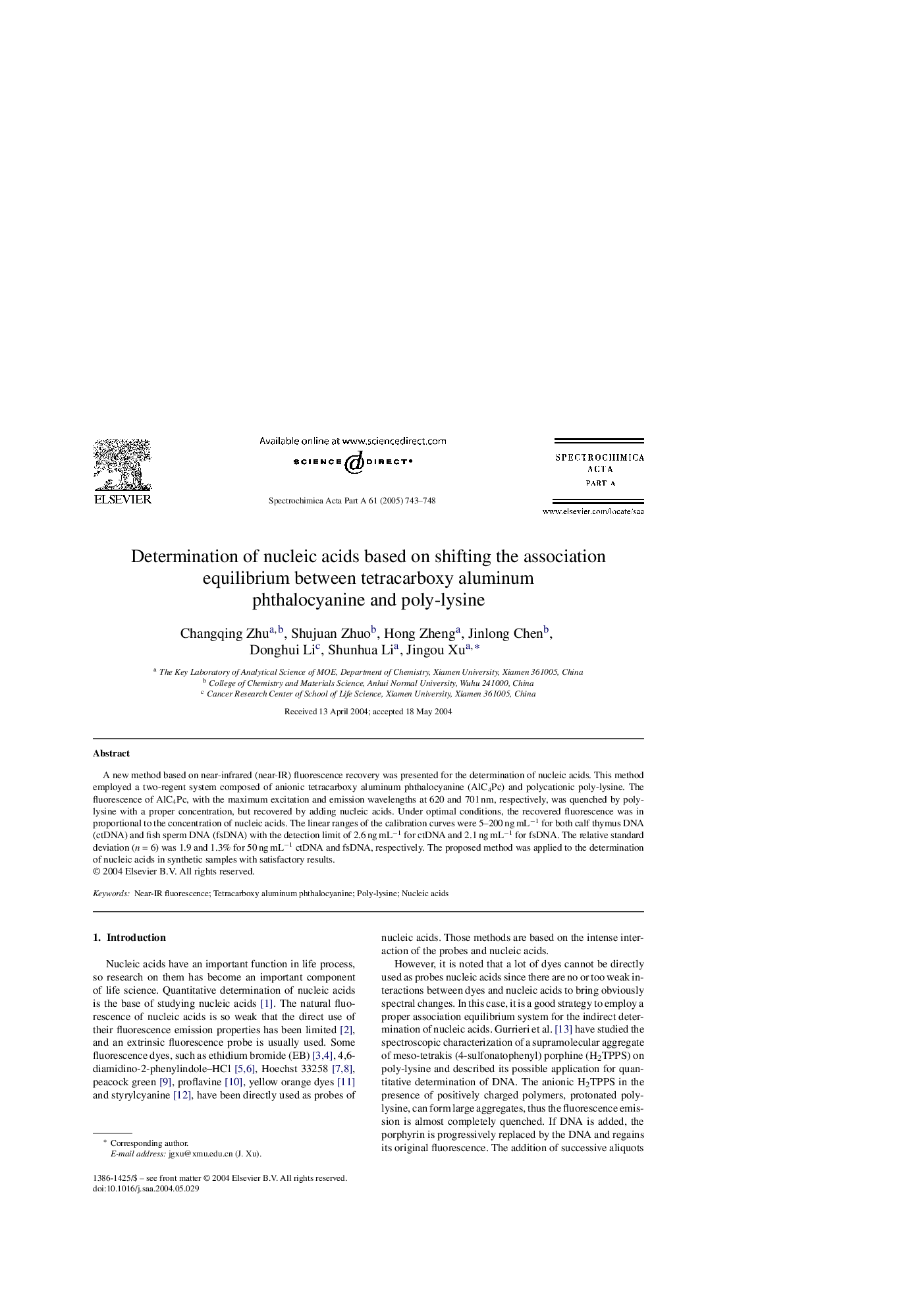| Article ID | Journal | Published Year | Pages | File Type |
|---|---|---|---|---|
| 10557517 | Spectrochimica Acta Part A: Molecular and Biomolecular Spectroscopy | 2005 | 6 Pages |
Abstract
A new method based on near-infrared (near-IR) fluorescence recovery was presented for the determination of nucleic acids. This method employed a two-regent system composed of anionic tetracarboxy aluminum phthalocyanine (AlC4Pc) and polycationic poly-lysine. The fluorescence of AlC4Pc, with the maximum excitation and emission wavelengths at 620 and 701 nm, respectively, was quenched by poly-lysine with a proper concentration, but recovered by adding nucleic acids. Under optimal conditions, the recovered fluorescence was in proportional to the concentration of nucleic acids. The linear ranges of the calibration curves were 5-200 ng mLâ1 for both calf thymus DNA (ctDNA) and fish sperm DNA (fsDNA) with the detection limit of 2.6 ng mLâ1 for ctDNA and 2.1 ng mLâ1 for fsDNA. The relative standard deviation (n = 6) was 1.9 and 1.3% for 50 ng mLâ1 ctDNA and fsDNA, respectively. The proposed method was applied to the determination of nucleic acids in synthetic samples with satisfactory results.
Related Topics
Physical Sciences and Engineering
Chemistry
Analytical Chemistry
Authors
Changqing Zhu, Shujuan Zhuo, Hong Zheng, Jinlong Chen, Donghui Li, Shunhua Li, Jingou Xu,
